Vampire Horror Movie Reviews: the Nosferatu films 1922, 1979, 1988 & 2000.
Posted by Harbinger451 on May 8, 2016
A Short History of the Nosferatu Vampire in Cinema, from 1922 to 2014.
Here we will be (mostly) looking at the classic silent-movie Nosferatu, eine Symphonie des Grauens (F. W. Murnau, Ger. 1922) with Max Schreck as the nosferatu. It’s remake Nosferatu: Phantom Der Nacht (Werner Herzog, Ger/Fra. 1979) and then the later sequel (of sorts), Nosferatu a Venezia (Augusto Caminito, Ita. 1988) – both with Klaus Kinski playing the nosferatu. Followed by Shadow of the Vampire (E. Elias Merhige, USA. 2000), which is a fictional account of the making of the original movie, with Willem Dafoe playing the actor Max Schreck as a real vampire.
But first, a brief discussion of the origins and meaning of the word Nosferatu, reputedly to be of Romanian etymology – but it is absent, in written form at least, from any known historical phase of Romanian that precedes the publication of Bram Stoker‘s popular Gothic novel Dracula in 1897. Its first written appearance (anywhere) was actually in an 1865 German-language article by Wilhelm Schmidt which discusses Transylvanian customs, in which he implies that nosferatu is the Romanian (or, at least, a local Transylvanian dialect) word for vampire. British author Emily Gerard, whom Stoker identified as his source for the term, was the first to record the word in an English-language publication in her article Transylvanian Superstitions in 1885 – and, like Schmidt, she refers to it as the Romanian (or a Transylvanian dialect) word for vampire. It seems likely that the word’s etymology is probably derived from the similar Romanian forms Nesuferitu (insufferable/repugnant one) or Necuratu (unclean one), terms typically used when referring to Satan or the Devil.

Max Shrek in Nosferatu: eine Symphonie des Grauens (F. W. Mornau, Ger. 1922)
Nosferatu, eine Symphonie des Grauens (F. W. Murnau, Germany. 1922)
AKA: Nosferatu: A Symphony of Horror (UK, USA) | Nosferatu (UK, USA)

This German Expressionist Horror Movie directed by Friedrich Wilhelm Mornau and starring Max Schreck in the titular role is the first film adaptation, though a fairly loose one, of the novel Dracula (Bram Stoker, 1897). It was made without the permission of the then copyright holders (Stoker’s heirs) and despite changing the Count’s name to Graf Orlok, paring down the story line and characters dramatically and never mentioning the word vampire (using nosferatu instead) the film makers were sued and a court ruled in 1925 that all prints of the film should be destroyed. Luckily, they weren’t – just a few survived – for this is a brooding, melancholic master work of early horror cinema with some truly nightmare-like scenes utilising shadow and darkness to spell-binding effect. The use of speeded up sequences and negative images make the slow pace mesmeric and fascinating while Schreck’s depiction of the Count remains one of the most horrific, and iconic, to date. The idea that sunlight is fatal to vampires originates from this movie.
The plot: In the (fictitious) German town of Wisborg, Thomas Hutter (played by Gustav v. Wangenheim) is sent by Knock, his boss, to Transylvania to meet with a wealthy client named Count Orlok who wishes to buy a house in their home town. Before leaving for Romania, Hutter entrusts Ellen (Greta Schröder), his young wife, to the care of friends Harding and Annie. After a long journey Hutter reaches the Carpathian Mountains and stops at an inn for the night, he tells the locals his destination but they become frightened and try to dissuade him from going on to meet with the Count. The next morning he travels on by coach till, as nightfall approaches, they reach a bridge at a mountain pass and the coachmen refuse to go any further so Hutter is left alone by the roadside. After night-fall a mysterious dark clad coach driven by a mysterious dark clad figure arrives to pick him up and take him the rest of the way.
Once ensconced at his client’s crumbling old castle Hutter starts to enjoy dinner with the decidedly spooky looking Count and accidentally cuts his thumb with a knife – Orlok takes his wounded hand and tries to drink Hutter’s blood but, repulsed, the young man pulls his hand away. The next morning Hutter awakes to find he has two puncture wounds on his neck and, after exploring, discovers that the castle is apparently deserted. He writes a letter to his wife, which he gives to a courier – who just happens to be passing by. (Odd that, considering how the locals won’t come near the place). That night, after seeing a photo of Hutter’s lovely young wife, the Count immediately signs the documents granting him possession of a suitably dark and crumbling premises back in Wisborg – just across from the young man’s own house and just across from his wife’s lovely young neck. After retiring for the night, Hutter finally gets round to reading a book he had picked up at the inn earlier… and it’s all about the nosferatu. Now suspicious of the Count’s true nature, Hutter explores the castle further during the next day. He finds the crypt and discovers the dormant Graf Orlok in a coffin. Terrified he retreats to his room to cower. As another night comes in Hutter sees from his bedroom window the count piling coffins on a cart and then climb into the last one as the cart drives away. He realises Orlok is heading for Wisborg and for Ellen. The desperate young man’s only escape route from the castle is to climb out of the window, which he does, but then falls and is knocked unconscious.
Count Orlok and his coffins get shipped by raft downriver to the sea, and then by schooner to Wisborg. During the journey the crew of the schooner fall victim to the nosferatu one by one till the craft sails into the town port a ghost-ship – the dead captain tied to the wheel – and its hull full of plague rats. Hutter, not yet recovered from his injuries, leaves the hospital in which he awoke and rushes home to warn the town and Ellen of the impending danger.
Watch the 1922 Nosferatu movie (English Version) here for FREE:
Runtime: versions vary from about 65 to 94 min – Black & White or Tinted Monochrome – Silent.
Harbinger451’s Rating: 8/10 (Very Good) – though silent era movies can often seem clunky and the acting style comically over-exaggerated to modern audiences you really should persevere with this one for it is an iconic and influential piece of cinema history that still manages to be creepy, unsettling and even beautiful to watch. A must see for any movie buff and especially for fans of the horror genre. Although various versions of this movie are available for free (like the one above), I can’t recommend enough getting a fully restored version through the links below:
Buy Nosferatu (1922) on DVD or Blu-ray at Amazon.com
Buy Nosferatu (1922) on DVD or Blu-ray at Amazon.co.uk
—

Poster for Nosferatu the Vampire (Werner Herzog, Ger/Fra. 1979)
Nosferatu: Phantom Der Nacht (Werner Herzog, Germany/France. 1979)
AKA: Nosferatu: fantôme de la nuit (France) | Nosferatu: Phantom of the Night (UK) | Nosferatu the Vampyre (USA)
A hauntingly creepy reworking of F. W. Mornau’s classic 1922 original, with Klaus Kinski in the title role, now renamed Count Dracula as opposed to Orlok. Isabelle Adjani is Lucy Harker (Ellen), the main object of his thirst, and Bruno Ganz is Jonathan Harker (Hutter), the hapless victim who sets Dracula onto Lucy’s trail. The performances and visuals are striking indeed and the musical score very atmospheric. Despite being infuriatingly slow at times – especially in the first half – his film is probably more palatable to a modern audience than the 1922 version. It features some excellent scenes of bats and thousands of rats, and incorporates heavy symbolism as the town of Wismar descends into chaos with Dracula’s illicit arrival among a hoard of plague carrying rats. It follows the same basic plot as the silent original but the ending is definitely a turn up for the books.
Runtime: 107 min – Colour – German, English & Romanian.
Harbinger451’s Rating: 7/10 (Good) – it has moments of genius but doesn’t quite live up to the original, inexplicably missing out some of the more iconic scenes. Kinski is brilliant as the Count however, not only making him a repulsive character but also a strangely sympathetic one full of pathos and even prone to the occasional (unintentionally?) comic moment, and Adjani is suitably pale and ethereal as the classic Gothic heroine who must stand (or lay) alone against him.
Buy Nosferatu (1979) on DVD or Blu-ray at Amazon.com
Buy Nosferatu (1979) on DVD or Blu-ray at Amazon.co.uk

Salem’s Lot
—
Salem’s Lot
1979 saw a hugely popular television mini-series adaptation of Stephen King’s vampire novel Salem’s lot (1975) – directed by Tobe Hooper and starring David Soul and James Mason. Reggie Nalder plays Kurt Barlow, the ancient Master vampire who has come to the small American town of Salem’s Lot with evil and, of course, vampiric purpose. The visual appearance of Barlow (left) is very reminiscent of the Nosferatu vampire, even down to the long and sharp rat-like front incisors instead of the (now) more common fangs.
—
Nosferatu a Venezia (Augusto Caminito, Italy. 1988)
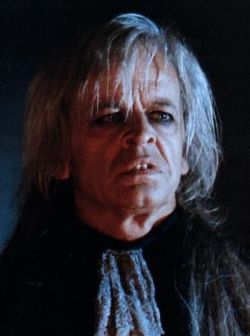
Nosferatu in Venice
AKA: Nosferatu in Venice (UK) | Vampire in Venice (USA)
This underrated (at the time of its limited release) semi-sequel to Werner Herzog’s 1979 homage to Mernau’s seminal vampire horror followed almost a decade later. It picks up the pace and spices up the blood and nudity quota a couple of notches, though not necessarily for the better, and fans of modern horror may still find the pacing a little too slow and the performances a little too brooding for their liking. Kinski (right) reprises his role as the nosferatu, with hair this time (apparently, he refused to wear the make-up from the first film again), who is revived by a ill-conceived séance during carnival time in Venice. Christopher Plummer appears as the rather ineffectual vampire hunting Professor Paris Catalano and Donald Pleasence as the pious priest Don Alvise – the pair pit themselves against the anguished but immensely powerful and murderous immortal (known only as Nosferatu in this movie) who has set his sights on the beautiful Helietta Canins, played by Barbara De Rossi.
Runtime: 97 min – Colour – Italian.
Harbinger451’s Rating: 6.5/10 (Pretty Good to Good) – The film looks great, benefiting from the awesome setting, and Kinski continues to carry himself with an evil indignation that fits the part perfectly. The movie is let down by a rather disjointed plot that many may have trouble making sense of. Definitely a case of style over substance but still very much worth hunting down for that style is often breathtaking.
Buy Nosferatu in Venice (1988) on DVD at Amazon.com
Buy Nosferatu in Venice (1988) on DVD at Amazon.co.uk

Buffy the Vampire Slayer
—
In the 1994 movie adaptation of Anne Rice’s novel Interview with the Vampire the vampire character Luis (Brad Pitt), presumably in 1922, visits a cinema that is showing Mornau’s Nosferatu: eine Symphonie des Grauens, and Count Orlok’s death scene is shown.
—
Buffy the Vampire Slayer
The look of the main antagonist (or Big Bad) in the 1997 first season of Josh Whedon’s Buffy the Vampire Slayer television series was heavily influenced by the appearance of Nosferatu. Mark Metcalf played The Master (left), a centuries-old vampire determined to open the portal to hell below Sunnydale High School in the fictional town where Sarah Michelle Gellar’s Buffy lives.
—

Shadow Of The Vampire
Shadow of the Vampire (E. Elias Merhige, Luxembourg/UK/USA. 2000)
This black-comedy horror is a highly fictionalised account of the making of Nosferatu: eine Symphonie des Grauens (F. W. Mornau, Ger. 1922) that depicts director Mornau (John Malkovitch) as an obsessive and ruthless perfectionist who will do anything to create his masterpiece of horror. The film requires a ruined castle, so he finds a real ruined castle. The film requires superstitious peasants, so uses real superstitious peasants. The film also requires an ancient evil vampire, so he uses a real ancient evil vampire… what could possibly go wrong? Willem Dafoe plays the unnamed vampire who is playing Max Schreck playing Count Orlok – without the need for makeup. Eddie Izzard plays Gustav von Wangenheim (Hutter) and Catherine McCormack plays Greta Schroeder (Ellen), while Udo Kier plays producer Albin Grau and Cary Elwes plays cinematographer Fritz Arno Wagner. The creators of this film clearly have a great deal of affection for their source material and took pains to lovingly recreate many of the classic scenes from the original.
Runtime: 92 min – Colour – English, German and Luxembourgish.
Harbinger451’s Rating: 5.5/10 (Average to Pretty Good) – This is a great idea for a movie and it has a really good cast, but it fails as a black-comedy, a horror and a homage. The whole, in this case, is NOT greater than the sum of its parts. I really wanted to love this movie for its concept has potential (and most critics can’t seem to praise it enough), but at best, its a darkly amusing and interesting portrait of vampirism and early motion picture making. I, for one, was disappointed – but that may be because I had such high expectations.
Buy Shadow of the Vampire (2000) on DVD or Blu-ray at Amazon.com
Buy Shadow of the Vampire (2000) on DVD or Blu-ray at Amazon.co.uk
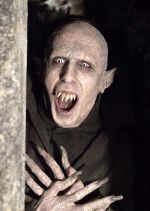
What We Do in the Shadows
—
In 2002 Max Schreck’s Count Orlock made a brief appearance (via manipulated stock footage) in the SpongeBob SquarePants animated series (Season 2, Episode 16, Graveyard Shift) flicking a light switch on and off… the gag ending revealed that it was he who was responsible for the lights flickering on and off mysteriously throughout the horror trope filled episode.
—
What We Do in the Shadows
In 2014, the New Zealand horror comedy mocumentary film What We Do in the Shadows featured an 8000 year-old nosferatu type vampire named Petyr, played by Ben Fransham (left), who lives in a stone coffin on the bottom floor of the house he shares with three other (much younger) vampires. The film is presented as a fly-on-the-wall style documentary as the four mis-matched immortals are forced to adjust to early twenty-first century life, relationships, and technology when a new rookie vamp is introduced to the fold… and all while being followed by a very mortal film crew. For the most part it is very funny, but it does lag a little in places.
—

Count Orlok flickering the lights on and off in SpongeBob SquarePants.
Please feel free to comment on these reviews – or add your own – by replying to this post below.
We are building a whole section dedicated to the wider genre of horror on our website HERE.
Brought to your attention by Harbinger451.
Copyright © 2016 Harbinger451 – All Rights Reserved




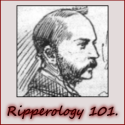





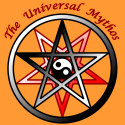



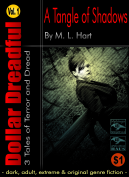
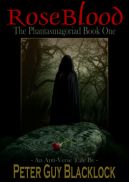
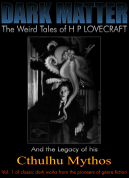


Homepage said
… [Trackback]
[…] Read More here: harbinger451.wordpress.com/2016/05/08/vampire-horror-movie-reviews-nosferatu-1922-to-2000/ […]
LikeLike
Del Lingner said
Weiter so ! Netter Beitrag 🙂
LikeLike